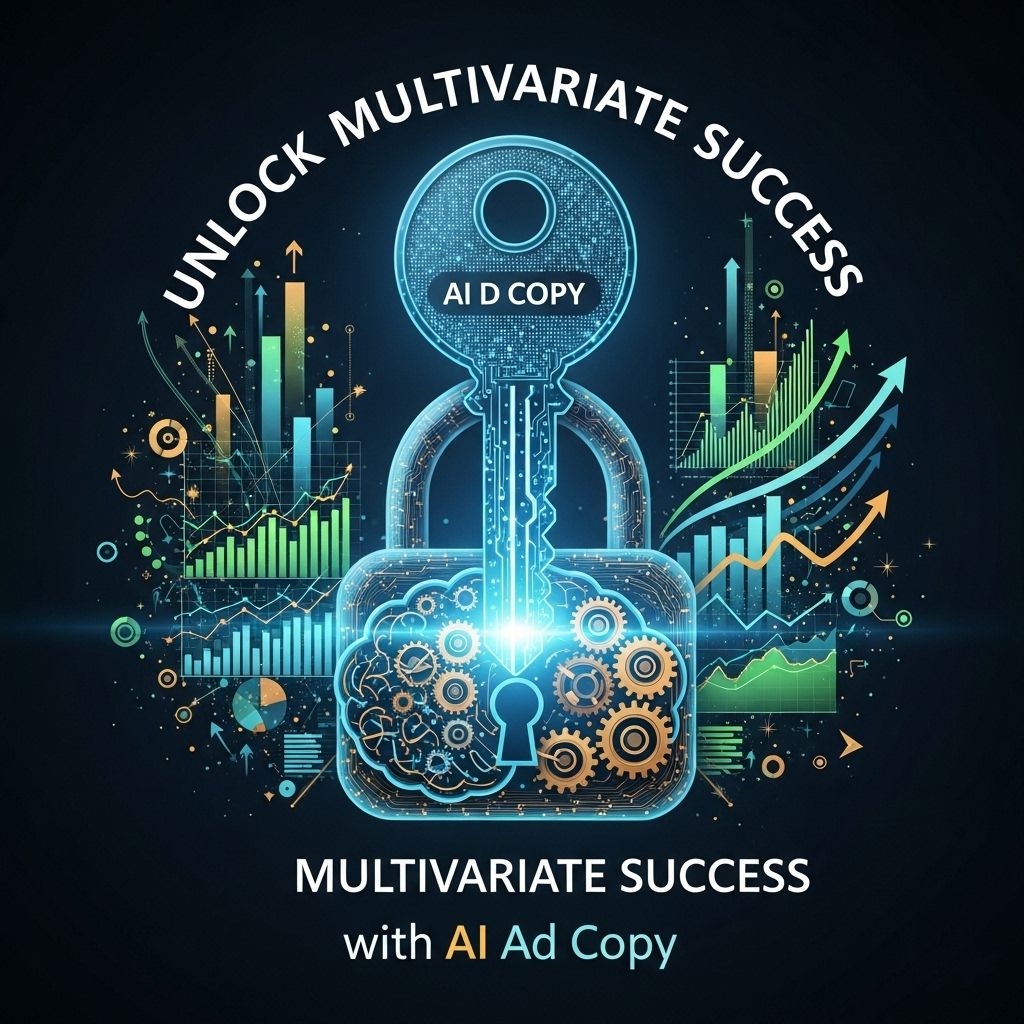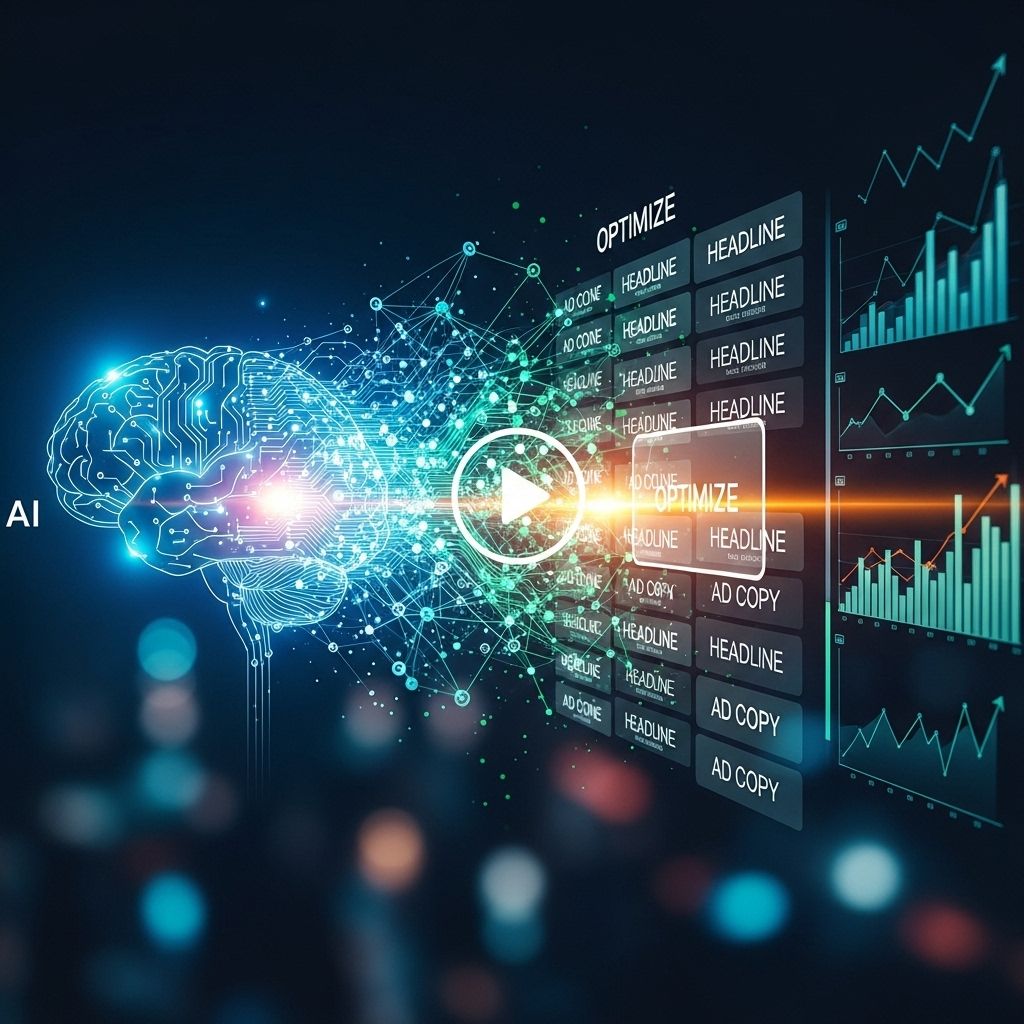Unlock Multivariate Success with AI Ad Copy
Discover how AI-driven ad copy can enhance multivariate testing and drive superior marketing results.

In today’s fast-paced digital landscape, businesses are constantly seeking innovative ways to stand out amidst the noise. One of the most effective strategies is leveraging artificial intelligence (AI) to optimize ad copy for multivariate testing. This approach not only enhances engagement but also increases conversion rates significantly. By utilizing advanced algorithms and data analytics, marketers can create tailored ad experiences that resonate with their audiences. In this article, we will explore how AI can unlock multivariate success in advertising through data-driven insights and strategic applications.
Table of Contents
Understanding Multivariate Testing
Multivariate testing is a sophisticated method that involves testing multiple variables simultaneously to determine which combination yields the best results. Unlike A/B testing, which compares two versions of a single element, multivariate testing allows marketers to assess the performance of different elements within the same ad. This can include:
- Headlines
- Images or videos
- Call-to-action buttons
- Overall layout
The Importance of AI in Multivariate Testing
AI enhances the multivariate testing process by automating data analysis, making it possible to sift through vast amounts of data quickly. Here are a few key benefits:
- Speed: AI algorithms can analyze results in real time, providing immediate feedback on which ad variations are performing best.
- Precision: With machine learning, AI can detect subtle patterns in user behavior that humans may overlook.
- Scalability: AI systems can handle multiple ad variations and large data sets, enabling companies to scale their campaigns efficiently.
How AI Optimizes Ad Copy
AI’s impact on ad copy goes beyond just testing different variations. It also plays a crucial role in crafting the actual content. Here are several ways AI can enhance ad copy creation:
Data-Driven Insights
AI can analyze consumer behavior, preferences, and trends to inform ad copy. This data-driven approach ensures that the content resonates with the target audience. Some methods include:
| Method | Description |
|---|---|
| Sentiment Analysis | Understanding consumer emotions through social media and reviews. |
| Keyword Optimization | Identifying high-performing keywords that drive traffic and engagement. |
Dynamic Content Generation
AI-powered tools can generate dynamic ad copy that changes based on user behavior and demographics. For instance:
- If a user previously searched for travel deals, the ad can include personalized travel-related offers.
- Seasonal promotions can automatically update the ad copy to reflect current trends.
Implementing AI in Your Multivariate Campaigns
Integrating AI into your multivariate testing strategy doesn’t have to be daunting. Here are steps to ensure successful implementation:
1. Define Clear Objectives
Before diving into testing, establish what you want to achieve. Objectives may include:
- Increased click-through rates
- Higher conversion rates
- Improved ROI
2. Select the Right AI Tools
Choose AI solutions that align with your needs. Some popular options include:
- Google Optimize: Offers robust multivariate testing capabilities.
- Adobe Target: Integrates AI-driven personalization for targeted ads.
- Optimizely: Focuses on experimentation and data-driven insights.
3. Create Hypotheses
Based on your objectives, develop hypotheses about which elements of your ad copy may perform better. For instance:
- “Ad copy with a question in the headline will result in a higher engagement rate.”
- “Longer, more informative descriptions will convert better than shorter ones.”
4. Design Your Experiments
Utilize the AI tools to create multiple variations of your ad copy. Ensure that:
- You have a sufficient sample size to yield reliable data.
- You are testing one variable at a time for clarity in results.
5. Analyze Results
Once the testing phase is complete, use AI analytics tools to interpret the data. Look for:
- Which versions generated the most clicks.
- Which elements led to higher conversion rates.
Case Studies of AI in Action
Real-world examples can illustrate the effectiveness of AI in multivariate testing. Let’s look at a couple of notable case studies:
Case Study 1: Retail Brand Boosting Sales
A leading retail brand implemented AI-powered multivariate testing to optimize its online ads. By testing different headlines, images, and offers, they found that:
- A headline with a sense of urgency drove a 25% increase in clicks.
- High-quality images of products led to a 30% increase in conversions.
Case Study 2: Travel Agency Maximizing Engagement
A travel agency utilized AI to personalize its ad copy based on user behavior. The results were impressive:
- Users who saw personalized ads were 40% more likely to engage.
- Conversion rates increased by 35% after implementing dynamic content generation.
Challenges and Considerations
While the benefits of AI in multivariate testing are substantial, challenges still exist. Marketers should consider:
- Data Privacy: Ensure compliance with data protection regulations when collecting user data.
- Integration: Seamlessly integrate AI tools with existing marketing platforms for optimal performance.
- Continuous Learning: As algorithms evolve, it’s vital to continuously update strategies based on new insights.
Conclusion
As the digital advertising landscape becomes increasingly competitive, utilizing AI for multivariate ad copy optimization is not just an advantage; it’s becoming a necessity. By leveraging advanced technology, marketers can unlock new levels of success through personalized, data-driven strategies. With the right tools and methodologies in place, businesses can optimize their ad campaigns, engage their audiences more effectively, and ultimately drive better results.
FAQ
What is multivariate testing in AI ad copy?
Multivariate testing in AI ad copy involves testing multiple variations of ad elements simultaneously to determine which combinations yield the best performance.
How can AI enhance multivariate testing for ads?
AI can analyze vast amounts of data quickly, identify patterns, and optimize ad copy in real-time, leading to more effective multivariate testing results.
What are the benefits of using AI for ad copy creation?
AI can produce personalized and engaging ad copy at scale, reduce testing time, and improve conversion rates through data-driven insights.
Can I automate multivariate testing with AI tools?
Yes, many AI-powered tools offer automation features that streamline the process of setting up, running, and analyzing multivariate tests for ad campaigns.
What types of ad elements can be tested using multivariate testing?
You can test various elements such as headlines, images, calls to action, and overall layouts to find the most effective combinations for your audience.
How do I interpret the results of a multivariate test?
Interpreting results involves analyzing performance metrics such as click-through rates, conversion rates, and engagement levels to determine which variations performed best.








